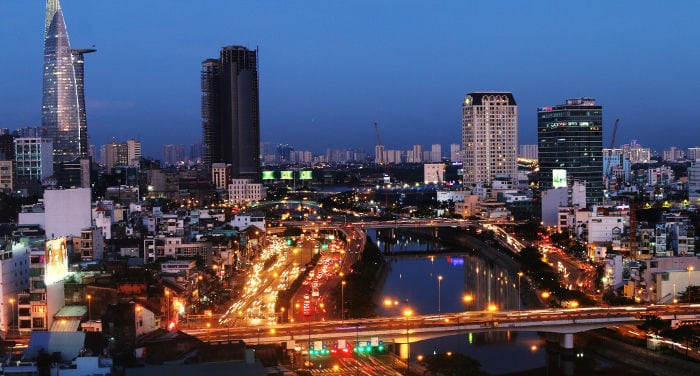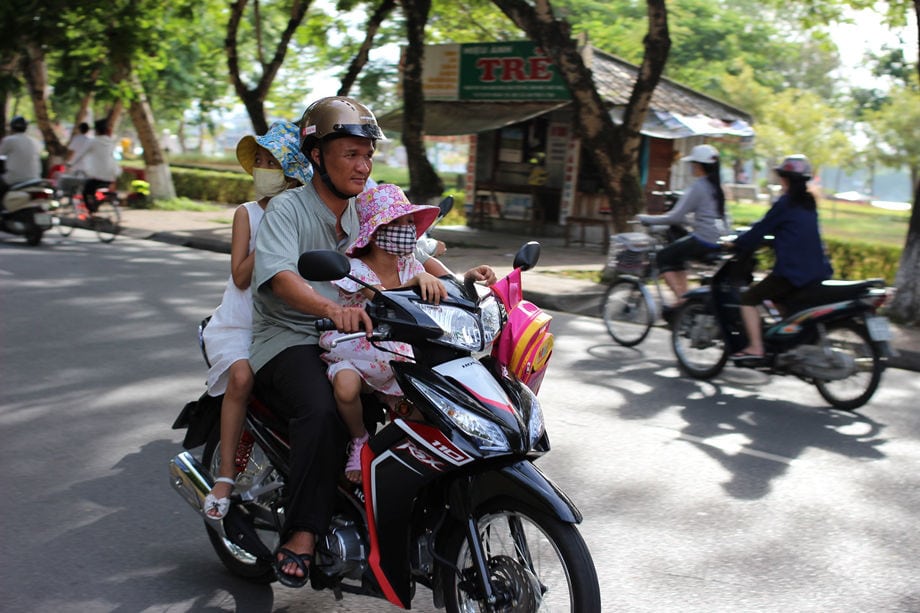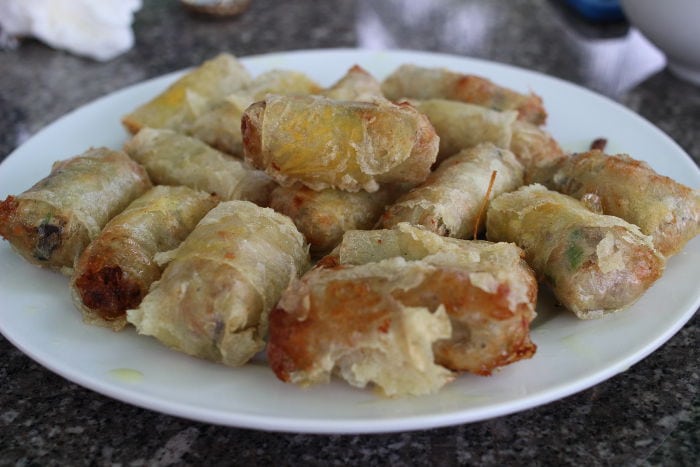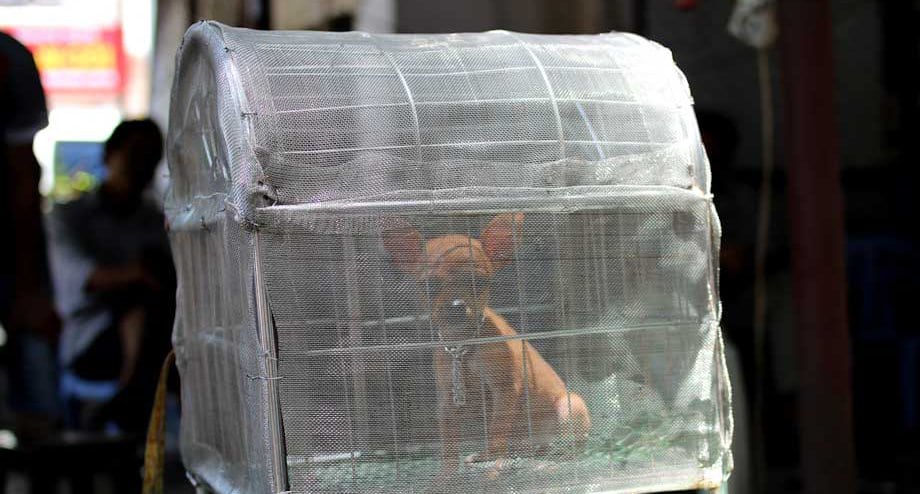
For tourists visiting Saigon for the first time, many of whom come clutching one of just a handful of printed tour guides currently on sale, even those picking their own way around the city might start to feel like they’re following some organised group tour.
When similar faces begin to pop up at each restaurant, bar or sight-seeing attraction, it’s time to get off of the beaten path and seek out your own undiscovered gems and dig beneath the surface of city life.
On the other hand, if you live in Saigon (or any city for that matter), seeking out these ‘off-grid’ places can completely alter one’s perception of the urban environment. City life can feel like quite an impersonal affair at times, with little, if any, opportunities for finding your own private adventures and discoveries in what may seem like a well-trodden city.
Here are some of Saigon’s best-kept secrets for an urban adventure with a difference:
The Secret Weapons Cellar
In 1967, Saigon resident Tran Van Lai began digging a hidden cellar beneath his home on Nguyen Dinh Chieu Street, in Saigon’s District 3. Lai was a secret operative for the Viet Cong and used the cellar to amass an arsenal of weapons and explosives in the lead up to the deadly Tet Offensive, a large-scale, finely coordinated surprise attack on US and South Vietnam forces that took place up and down Vietnam.
On the evening of 30 January 1968, an undercover assault team arrived at the narrow house on Nguyen Dinh Chieu. They quietly gathered their weapons and headed towards their objective, the southern gate of the Independence Palace (now the Reunification Palace). Their attack failed, as did so many others across the city, although the Tet Offensive was considered a success by Ho Chi Minh and his commanders, and many historians now see the Tet Offensive as the beginning of the end of US militiary involvement in Vietnam.
Like several other historically significant sites like this, the cellar is now open to the public. Find the narrow alleyway at 287 Nguyen Dinh Chieu and head to the house at humber 70. The alleyway, which connects Nguyen Dinh Chieu with Vo Van Tan Street, is often crowded with a small street market as buyers and sellers bustle through on motorbikes and bicycles. The house is therefore quite easy to miss amidst the action.
The entrance hall now contains a small display (largely written in Vietnamese) outlining the story of the cellar, along with various artefacts from the war to show how weapons were covertly transported around the city during the US occupation. When you’re ready to head underground, try to find the cellar hatch first, then have the caretaker open it for you.
Descend the concrete stairs to find a cool, confined space fully decked out with maps and secret documents, a rack of rifles and rocket launchers, and crates of hand grenades, pistols and bullets, much as it would have looked at the time.
Admission to the weapons bunker is free, although a small tip of one or two dollars for the caretaker will of course be gratefully received.
287/70 Nguyen Dinh Chieu Street, District 3, Ho Chi Minh City.
Note: The house is often closed for lunch between 11am and 2pm.
Saigon’s Oldest Surviving Building
Located in the grounds of the magnificent ‘Bishop’s House’, a 19th-century colonial mansion built for the residing French archbishop, Tan Xa Palace, a small, single-room, single-storey structure, is over 200 years-old. Having been constructed in 1790, it originally sat on the banks of the Thi Nghe Canal, given as a gift to the then French archbishop by Emperor Gia Long. The house was relocated several times before arriving in its current location in 1911.
Built in the traditional architectural style, with wooden beams and intricate Chinese-style detailing, the structure has been restored several times in recent years and now serves as a private Catholic chapel and prayer room.
Tan Xa Palace is open to the public, accessed via the gate on Tran Quoc Thao Street, however, like many sights in HCMC, it may close during lunch hours.
180 Nguyen Dinh Chieu, District 3, HCMC
Admission: Free
Subterranean Tunnels
The Gia Long palace has a colourful history. Now the Ho Chi Minh City Museum, it was constructed in 1890 by French architect Alfred Foulhoux with the full intention of becoming an exhibition space. However, before the structure was completed, French Indochina was established (incorporating Vietnam, Cambodia and Laos) with Hanoi as its official capital.
The magnificent Norodom Palace (which stood on the site of the current Reunification Palace until 1962) was deemed too lavish for the relegated Governor of Saigon, who was asked to move into the Museum which was quickly converted into a private residence. During World War 2 it was later used as headquarters for the occupying Empire of Japan, and then by the French and British authorities at the war’s end.
In During the second Indochina war, in 1962, when an aerial bomb attack on Norodom Palace forced the then Prime Minister of South Vietnam, Ngo Dinh Diem, to take up residence in Gia Long while what was left of Norodom was torn down and the current palace erected. Diem never got to see his new home completed, however. He was assassinated during a military coup in 1962. He must have sensed that his life was in danger beforehand, having had his own private bomb-proof shelter constructed beneath Gia Long along with a network of tunnels by which he could escape into nearby streets. It was the route he and his brother took on the night of the coup, yet both were captured and killed the next day.
Today, Gia Long is once again a museum, and houses some genuinely interesting displays about the history of Ho Chi Minh City, including one particular poignant room dedicated to the August Revolution of 1945. The minimal entry fee is worth it alone just to wander the corridors of this historic building, but if you come across an open steel door that’s thicker than your mattress, go inside. Diem’s bunker and escape tunnels can still be accessed today, and even feature deceptive staircases that at first glance only appear to go upwards.
The bunker and tunnel system, isolated from the palace by thick blast doors, features several living areas, and, according to local historian Tim Doling, was dug at the same time as the Reunification Palace’s tunnel system was being installed nearby. While only a portion of the tunnels in both the old Gia Long Palace and the ‘new’ Reunification Palace are open to the public, local legend has it that the two buildings are in fact connected below ground, and many believe that Diem’s escape routes stretched as far as the Saigon Zoo in one direction, and Le Van Tam Park (at the crossroads of Hai Ba Trung and Dien Bien Phu) in the other.
The Ho Chi Minh City Museum is at 65 Ly Tu Trong, District 1, Ho Chi Minh City.
The Perfect Hidden Cafe
Saigon is filled with hidden cafes, many of which lurk in the upper echelons of crumbling 1960s apartment blocks like that at 14 Ton That Dam Street in District 1. Possibly one of the least well-known ‘hidden’ cafes actually sits in plain view on a side street in District 3. There is, however, no sign, and by nightfall shows little signs of life other than a solitary candle in the window.
Era Cafe is like a trip into early 20th-century Paris, filled with the heady aromas of fresh coffee, a faint romantic fog of cigarette smoke, and a playlist of laid-back jazz played from antique speakers.
Add into the mix some subdued lighting provided by candles and a few dusty, tiffany-style lamps, plus racks of vintage vinyl and well-thumbed novels, and Era comes out as one of the coolest hangouts in the city.
A small menu of cocktails and juices is offered alongside the more caffeine-rich creations, and, in true speakeasy style, the rules of the house are quite clearly stated (albeit in Vietnamese): no cellphones, no laptops, and, above all, speak easy (in other words, keep your voice down!).
Era Cafe is at 58c Tran Quoc Thao, District 3, Ho Chi Minh City.
Going Rogue for Craft Beer
Riding on the back of the craft beer revolution that has been rocking Ho Chi Minh City since 2014 comes a stylish yet relaxed bar dedicated to all things hoppy. At street level, however, you can (and probably will) walk right past it.
Rogue Saigon opened in the summer of 2016 and occupies the top two floors, plus a cool rooftop ‘crow’s nest’, in an old apartment building just a few blocks from the famous Rainbow Bridge in District 1. Find the discrete, unmarked entrance, climb the winding staircase up and up, and enter a loft space that’s pure chill, with over a dozen locally brewed beers on tap, a handful of well thought out snacks. The warm copper lights, the reclaimed timbers and stunning artwork on the walls make for a vibe that’s straight outta’ Brooklyn.
Above the bar level is a chic rooftop terrace overlooking the crossroads below as Saigon’s glittering skyline looms above that. From there, climb the ladder and flip open the hatch for a semi-private perch that feels rather like a kid’s treehouse… with beer. Regular social and live music events keep the crowds entertained, so be sure to check their Facebook page to see what’s happening.
If IPAs, porters and saisons are not your thing, look out for Saigon Cider, bringing a taste of the English countryside to Saigon, and made locally with Vietnamese apples grown nearby.
Rogue Saigon is at 13 Pasteur Street (top floor), District 1, Ho Chi Minh City.
The Secret Shrine (and The Secret Burger)
Ben Thanh Market often fails to live up to the expectations of many tourists. Standing in the centre of District 1, and as one of the city’s most iconic buildings and ‘must-see’ attractions, it has today become more of a tourist trap than a place to bag a bargain. With elevated (and wildly fluctuating) prices for foreigners, and sometimes overly pushy vendors who won’t take ‘no’ for an answer, it’s often worth skipping Ben Thanh and venturing out to the more ‘local’ markets like Tan Dinh or Thi Nghe.
But, of course, as one of the oldest and largest markets in the city, Ben Thanh is still worth a peek, particularly in the early mornings when the atmosphere is a little more chilled. It’s still a working market and spectators will see everything from live frogs to brooms and dried fruit to those ubiquitous ‘Good Morning Vietnam’ t-shirts being sold. It’s also a place to thoroughly soak up the frenetic, old-world charm that only a Vietnamese market can provide.
To get away from the bustle and find this hidden gem, locate the tiny staircase tucked at the end of a seemingly dead-end row of stalls in the south corner close to shop 94 (maps are provided at the market’s entrances). Then keep heading up.
Offering a bird’s-eye view over the maze below, the small shrine perched way up here in the eaves is one of the city’s best-kept secrets. It’s a pocket of peace and tranquility for market vendors to pray and leave offerings for the gods in the hope of a bountiful day’s trading ahead. Just remember to be respectful, particularly when taking photographs, and keep your voices down.
For a bonus ‘secret eat’ nearby, find the nail shop at 4 Phan Boi Chau Street (the road running along the east side of the market) and, in particular the narrow doorway to the right. Hailed by many as the ‘best burger in Saigon’, Soul Burger’s hidden location, accessed via a narrow staircase at the back of the nail salon, makes its Motown-inspired creations taste even better. Head to the balcony for an excellent vantage point to watch over the action with a cold beer and a bun.
Ben Thanh Market is located on Le Loi Boulevard at Phan Boi Chau Street, District 1, Ho Chi Minh City.
Look Up – The Secret Evacuation Point
Largely mistaken as depicting a scene taking place on the roof of the former US Embassy, the infamous photograph taken on 30 April 1975, by Dutch photographer Hugh Van Es, shows the fall of Saigon at one of its most chaotic moments. A US helicopter balances on the crumbling elevator housing atop a CIA-owned apartment building in the heart of the city, as over a dozen South Vietnamese civilians scramble up the ladder, desperate to get on board before the city is overrun by North Vietnamese forces. As has been remarked ever since, there are more people on the ladder alone than the aircraft was ever designed to carry.
The photograph has become an iconic symbol of America’s failure in Vietnam, and has been even been parodied by pop culture, becoming just one small part in the largest helicopter evacuation in history. It is estimated that over 7,000 people were extracted by chopper alone in the final hours before North Vietnamese tanks rolled into the city. Most were taken to US ships waiting out at sea, and many would eventually find refuge in Thailand, the Philippines or the United States of America.
As Saigon’s skyline continues to rise, it’s now harder to spot than ever, but that iconic rooftop is still there, and still recognisable. The apartment building stands at 22 Ly Tu Trong Street in District 1, across the street from the shimmering twin towers of the Vincom Center. The rooftop is best viewed from the junction at Dong Khoi Street and Le Thanh Ton.
Riverside Bliss
The centre of Ho Chi Minh City can get a bit too much for everyone at times. The fumes, the noise, the motorbikes up on the pavements, all with soaring temperatures and humidity loaded on top. For some much needed peace and quiet, a trip over the river to District 2 is a must. Hidden at the end of a winding series of backstreets in the Thao Dien area of town, is The Deck, a bright, breezy and contemporary bar and restaurant space perched on the bank of the river itself.
As you’ll see when you arrive, it’s not the sort of place you’d otherwise stumble upon as you explore Saigon, and although this list should, technically, be about the best secrets in the city, The Deck is famous among the expat crowd, and, more recently, among the more discerning travellers who might have spotted it in one of a few swanky travel guides and magazines that have blown the lid on this spot.
Taking a seat on the deck itself, with the water just beneath your feet, the cool river air billows through The Deck’s open frontage as wildlife chirps and cheeps from the thick greenery on the opposite shore. It’s not quite the edge of town, but it sure feels like it. Slow boats chug and drift from left to right, right to left, along with floating mangroves.
The cocktails are some of the best in the city, as is the food. The Deck’s menu bursts with expertly crafted regional flavours, along with some European influences, and is as classy as the decor. For a decadent breakfast, a sophisticated lunch, or for a special night out, The Deck truly is a hidden gem.
The Deck is at 38 Nguyen U Di Street, Thao Dien, District 2, Ho Chi Minh City.
Featured Tours in Saigon
Photo Credits: ![]() Ho Chi Minh City by Ramon Boersbroek
Ho Chi Minh City by Ramon Boersbroek




Dear Simon. Thank you. I’m very interested in district 2 untiuristy stuff and the advice of those who know more tgame. I’m coming for a month in June and would like to know how the people live there every day. Where the tai chi is are there dance classes what verbal medicine is ggere etc. your insights start those thoughts. Thank you
Hi Sue,
If you want ‘non-touristy’ stuff, I’d suggest heading to Districts 3, 4 and 5, or Binh Thanh District. All of these districts sit shoulder-to-shoulder with District 1 and offer a much more local insight into Saigon. If you like seafood, District 4 cannot be missed.
District 2 has its appeal, but is a 15 to 20 minute taxi ride from D1, and is home to one of Saigon’s biggest expat communities. If you want ‘old-school’ Saigon, D2 is not for you.